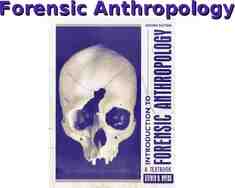INTRODUCTION TO…
20 Slides479.50 KB
INTRODUCTION TO
What is a theory? A set of concepts, definitions, relationships, and assumptions that project a systematic view of a phenomena It may consist of one or more relatively specific and concrete concepts and propositions that purport to account for, or organize some phenomenon (Barnum, 1988)
What are the components of a theory? Concepts – ideas and mental images that help to describe phenomena (Alligood and Marriner-Tomey, 2002) Definitions – convey the general meaning of the concepts Assumptions – statements that describe concepts Phenomenon – aspect of reality that can be consciously sensed or experienced (Meleis, 1997).
What is a paradigm? A model that explains the linkages of science, philosophy, and theory accepted and applied by the discipline (Alligood and Marriner – Tomey, 2002)
What is a domain? The view or perspective of the discipline It contains the subject, central concepts, values and beliefs, phenomena of interest, and the central problems of the discipline
How does domain relate to nursing theory? Nursing has identified its domain in a paradigm that includes four linkages: 1) person/client 2) health 3) environment 4) nursing
Purposes of nursing theory
What are the purposes of nursing theory? It guides nursing practice and generates knowledge It helps to describe or explain nursing Enables nurses to know WHY they are doing WHAT they are doing
Types of nursing theories Grand theories – broad and complex Middle-range theoriesaddress specific phenomena and reflect practice Descriptive theories – first level of theory development Prescriptive theories – address nursing interventions and predict their consequences
Why on earth do we study nursing theory? Everyday practice enriches theory Both practice and theory are guided by values and beliefs Theory helps to reframe our thinking about nursing Theory guides use of ideas and techniques Theory can close the gap between theory and research To envision potentialities (Gordon, Parker, & Jester, 2001)
“The study and use of nursing theory in nursing practice must have roots in the everyday practice of nurses (Gordon, Parker, and Jester, 2001).
So how do nurses use theory in everyday practice? Organize patient data Understand patient data Analyze patient data Make decisions about nursing interventions Plan patient care Predict outcomes of care Evaluate patient outcomes (Alligood, 2001)
How do student nurses begin to use nursing theory? By asking yourself two very important questions .
Student nurse questions What is the nature of knowledge needed for the practice of nursing? What does it mean to me to practice nursing?
Nursing also utilizes non-nursing theories
Commonly used non-nursing theories Systems theory Basic Human Needs theory Health and Wellness Models Stress and Adaptation Developmental Theories Psychosocial Theories
What is the link between nursing theory and the research process? Theory provides direction for nursing research Relationships of components in a theory help to drive the research questions for understanding nursing Chinn and Kramer (2004), indicate a spiral relationship between the two
Current trends that influence nursing theory Medical science Nursing education Professional nursing organizations Evolving research approaches Global concerns Consumer demands Technologies
“ Practicing nurses who despise theory are condemned to performing a series of tasks - either at the command of a physician or in response to routines and policies.” Leah Curtin, RN, MS, FAAN (1989) Former Editor, Nursing Management

























